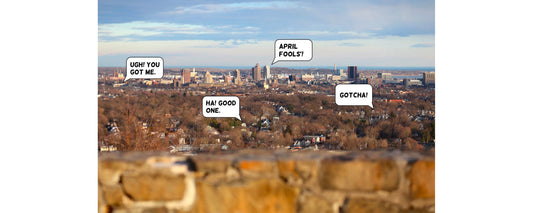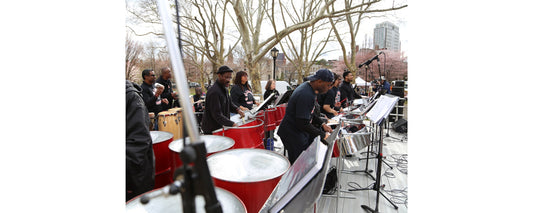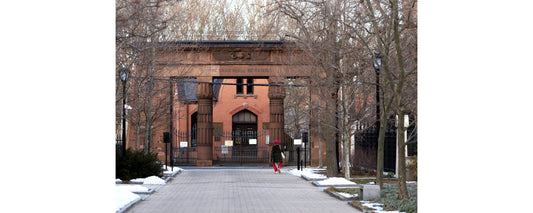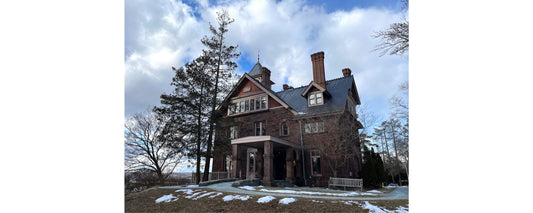On Sunday morning, November 8, a thump in her New Haven home made Marla Geha think, momentarily, that her son had just jumped off his bed, or that “someone had dropped something super heavy downstairs.” It was over in “less than a second,” she recalls, but she was already pretty sure she knew what had happened: an earthquake.
Geha, an astronomy professor, had lived with a group of geologists in graduate school, so she knew how to find out whether she was right. She logged into the website of the US Geological Survey. Sure enough, within an hour, an earthquake with a magnitude of 3.6 had been logged just south of New Bedford, Massachusetts. Her next move? Checking in with her colleague Maureen Long, a Yale seismologist.
sponsored by
While it may seem unlikely to feel an earthquake that originated nearly 130 miles away, Long wasn’t surprised at all. Here in eastern North America, earthquakes “tend to be felt more widely,” she says. “We’re in a kind of old, geologically stable region in the middle of a tectonic plate… The rocks are old and cold and transfer seismic energy more efficiently.” Recall, for example, a much stronger, 5.8 magnitude earthquake in Virginia in 2012 that caused damage to the Washington Monument in the nation’s capital and was also felt here. That quake, in fact, was felt as far away as southern Canada.
By definition, Long says, earthquakes happen on faults, and there’s not an “obvious major fault” located where the recent quake took place. Therein lies some of the mystery and the fun of being a seismologist. “We don’t have as good an understanding of earthquakes that happen in tectonic plates,” Long says. However, there are known to be many historic faults in the region that are hundreds of millions of years old. They left behind weak points in the rock, Long says, “and if they’re subjected to stress, you can have an earthquake.”
The Richter scale, which measures earthquakes, uses the common base 10 logarithm, meaning the amount of energy released—and the amount of shaking felt—is 10 times greater with each whole number on the scale. Long characterizes the November quake, at 3.6 on the Richter scale, as “small to moderate.” It was big enough to be felt not only in New Haven but as far as western Massachusetts, southern New Hampshire and Long Island. Minor damage was reported near the epicenter. The earthquake wasn’t very deep, Long says—about 10 kilometers below the earth’s surface. A deeper, more intense quake would be less widely felt, she says, but would likely cause more local damage.
Earthquakes aren’t uncommon in Connecticut. According to the Northeast States Emergency Consortium, 115 “felt earthquakes” have occurred statewide since the first one was recorded, on February 13, 1678. Some areas of the state are more prone to them than others; why that’s the case is another mystery to be solved. The village of Moodus in East Haddam is known as the epicenter of multiple small earthquakes shuddering every few years beneath Mount Tom in Machimoodus State Park. They “tend to be concentrated in earthquake swarms, when many small events are heard and felt over the course of several weeks or months,” NESEC says. “During the 1980s, several earthquake swarms took place at Moodus, each of which lasted a few months and were documented to consist of well over 100 small earthquakes.”
The state’s largest recorded earthquake, with an estimated magnitude between 4.4 and 5.0, occurred on the evening of May 16, 1791. “In the Moodus and East Haddam area, some chimneys were reported cracked and some stone fences were reported to be thrown down by the earthquake. Some cracks in the local soil were also found. To the west, this earthquake was felt as far as New York City and Albany, and it was felt in Boston to the northeast,” NESEC reports.
Similar to the one this November, a Sunday morning quake of about 3.8 originated near Hartford on August 9, 1840. It “was so frightening that people rushed from local churches, which they were afraid would collapse,” NESEC says. Bridgeport and Norwalk were near the epicenter of an October 26, 1845 earthquake with an estimated magnitude of 3.9 that “damaged stone fences in Weston and rang a church bell in Westport,” and a 3.1 quake was recorded in the village of Wauregan in Plainfield in January of 2015, part of another “earthquake swarm” between October of 2014 and July of 2015.
Long, whose research is modeling the structure of the deep earth and using “earthquake waves to study the structure of the crust and the mantle in various places,” was disappointed she didn’t feel this one herself. But she appreciates the opportunity it brings. Every time an earthquake happens, people’s interest in them is renewed, she notes, adding, “We don’t have a high earthquake hazard here, but it’s always good to know that we can have an earthquake here in New England.” It’s an opportunity, she says, for a “good teachable moment.”
Written by Kathy Leonard Czepiel. Image, featuring Maureen Long in the field, provided courtesy of Maureen Long.








